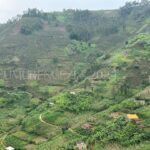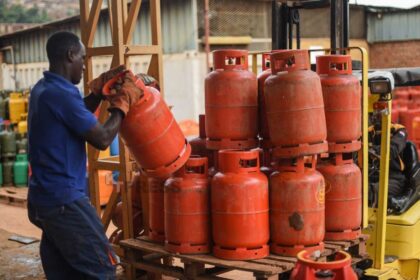Wetlands are among the world’s most threatened habitats, with only 13% of the original habitats left. Africa’s wetlands are threatened by habitat destruction and degradation, invasive alien species, pollution, over harvesting and climate change. However, African wetlands provide staple foods such as rice, fish and other materials for up to 15% of the world’s population.
Wetlands are also increasingly seen as important for adaptation to climate change.
The continued loss of wetlands has direct, measurable impacts on the people that depend on them, causing declines in biodiversity, food security, water quality and quantity, and carbon capture and storage to mitigate climate change.
Despite the dependence of a large proportion of Africa’s population on wetland ecosystem services, these habitats are rarely monitored sufficiently. This is due to a lack of awareness of their importance, the importance of monitoring, lack of resources (both financial and knowledge-based), as well as a lack of developed monitoring methods for the assessment of wetlands.
- Advertisement -
When it comes to Rwanda, approximately 10.6 percent of its surface area is covered with wetlands. The biggest wetlands are floodplain wetlands of low altitude associated with major lakes such as Lake Cyohoha, Rweru, Mugesera, Nasho, and rivers such as Nyabarongo, Akanyaru, Mukungwa, Base, Nyabugogo, among others.
In Rwanda, wetlands continue to play an essential role in supporting all development for sustainable development. They provide water storage, flood buffering, nutrient removal, and water purification as well as erosion control.
Despite their importance, wetlands in Rwanda face significant pressures, especially due to poor agricultural practices such as uncontrolled fertilizers and pesticides, soil erosion, peat extraction, illegal mining, illegal infrastructure, pollutants from industrial wastewater discharge among others.
So far, Rwanda has taken a bigger step in protecting environment. Nyandungu Urban Wetland Eco-Tourism Park can be a tangible proof of this effort.
This ecotourism jewel is nestled in the valley between Kimironko and Masoro-Bumbogo hill in Ndera sector, separating the districts of Gasabo and Kicukiro and soon will be accessible to the public.
According to Harerimana Jacques who is among the local community living around before this initiative Nyandungu Wetland was being destroyed.
“Before this decision of the government, this wetland was totally a mess. It was used for exploiting clay. Dredging and filling activities have caused flooding of mangrove habitat. Now you can see that it is getting back to its nature status,” he said.
Over the years, the highly degraded wetland was being used for different activities including agriculture and sand mining among other human activities, which were greatly affecting the ecosystem and thereby posing serious danger for surrounding livelihoods. Six years ago, Rwandan Government decided to change way of doing things in this Wetland.
Nyandungu Park covers an area of 121.7 hectares. Different species of butterflies have established themselves in this urban wetland where cranes and 70 other bird species fly freely.
Elements to be part of Nyandungu Urban Wetland Eco-Tourism Park include ornamental ponds, eastern gallery forests, medicinal plant gardens, paved walk ways, restaurants, information center and other recreational services.
The park is laden with different tree species which according to environmentalists, play a key role in minimizing floods which have been prevalent in the area.
The diversity in species in the park, conservationists say, will also be vital for the academia who may go there to study different species available in the park.
Stepping into the park, you are first welcomed by well-built gates and pavements made up of natural stones at all entrances. Close by is the information Centre where the visitor is taken through the different sections of the park.
The Minister of Environment, Dr. Jeanne d’Arc Mujawamariya encourages everyone to take the work done at Nyandungu Wetland as lesson and start contributing to the effort of protecting wetlands.
“Wetlands are source of wealth for all Rwandans. Whether we rely on wetlands for water, recreation or agriculture, we each have a role to play in their protection. Let’s all be water wise users by reporting illegal activities, applying environment friendly fertilisers and pesticides in wetlands and ensuring all commercial users have a valid water permit for the water they extract. Together, we can ensure our wetlands are healthy and full of life,” she said.
According to the Rwanda Environment Management Authority (REMA), this milestone work which started in 2016 costs about Rwf5 billion (US$4.5 million ), a little more than half of which was provided by the Rwanda Green Fund (FONERWA).
This investment could generate up to Rwf1 billion in revenue for the government during the first decade of operation of the site, provided that it is popular with tourists.









